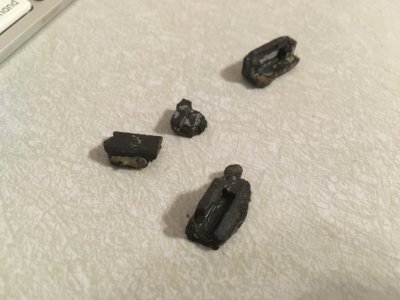Today I just finished putting my passenger side back together, I installed the SOS guides. The only difficult/tricky part is unhooking the cables from the plastic retainer. You need 2 vice grips (a lot of patience) and if you have someone that can push one of the cable ends out you’ll save yourself some time and frustration. Still have the drivers window to do.
Maybe someone can shed some light on the minor issue I’m having on the window that I just finished, going down is perfect, going back up it’s not fast but not slow and the class moves from front to back going up? (Meaning it moves from the front of the car backwards)
The shape of the glass may give the perception that it is moving front to back as the glass rises; but, because of the front and rear guides and the rather solid attachment to the regulator, it is not possible for the glass to move horizontally unless the sliders that fit into the front and rear guides are broken. With the door open and the glass 1/2 to 3/4 of the way up, grab the glass and try to move it back and forth. Should be minimal movement (some play in the slider mounting which kind of floats a little bit. If you have a lot of movement and clunks then you may have severely worn or broken / missing sliders. You will want the service manual for their replacement. Parts #6 and #7

acura.oempartsonline.com
After I did my Hugo kit, I noticed that I did have a very slight rocking motion in the glass as it reached the upper end of its travel. Probably not what you want to hear; but, the guides at the front and back of the door that the glass moves in were incredible dirty and in need of lubrication. There was a differential drag between the front and back guide which caused the glass to rock as it was coming up. If you don't mind scratching your arm up a lot and can display some creativity you can pack new grease into the guide track; but, cleaning is really difficult. I ended up putting a bucket under the door and then repeatedly dumping mineral spirits down the front and rear guide tracks from the window opening in the top of the door (and using a squirt bottle inside the door). Cleaned out the door cavity to boot! A few mineral spirit flushes and the old grease had started to softened enough that I could remove it by reaching in with a rag and jamming it into the guide track and wiping. I repeated the flush and wipe process a couple of time until the rags were no longer obviously picking stuff up and then packed in grease as best I could. Removing the guides from the door is the best way to clean and lubricate them; however, that gets into playing with the glass adjustment which is a place you really don't want to go unless you absolutely have to.
Make sure that plastic bobbin that the window mounting rides on at its attachment point to the regulator is clean and lubricated (there is a TSB covering this). If it doesn't slide easily it can impede the smooth operation of the glass and also make a really loud bang as slams from side to side rather than moving smoothly.
With the guides cleaned up and lubed and with the Hugo kit installed, my windows are also slower going up than going down. I think that is probably normal. Do your window speed testing with the engine running. My alternator maintains a voltage of around 14.5 volts when running pretty much regardless of the load. Voltage without it running drops to slightly less than 12 volts when the window motors are engaged. That last 2.5 volts makes a huge difference to the amount of torque that the window motor can generate.
Edit - in the SM you will see that there are two adjustable stopper plates mounted on the door skin (toward front and back of the glass). These establish the upper limit of glass travel when the matching piece on the base of the glass hits the stopper. Don't be tempted to fiddle with the stopper adjustment to eliminate any rocking. The stopper plates establish the clearance gap with the roof. Unless that clearance gap is incorrect don't mess with the stoppers.











